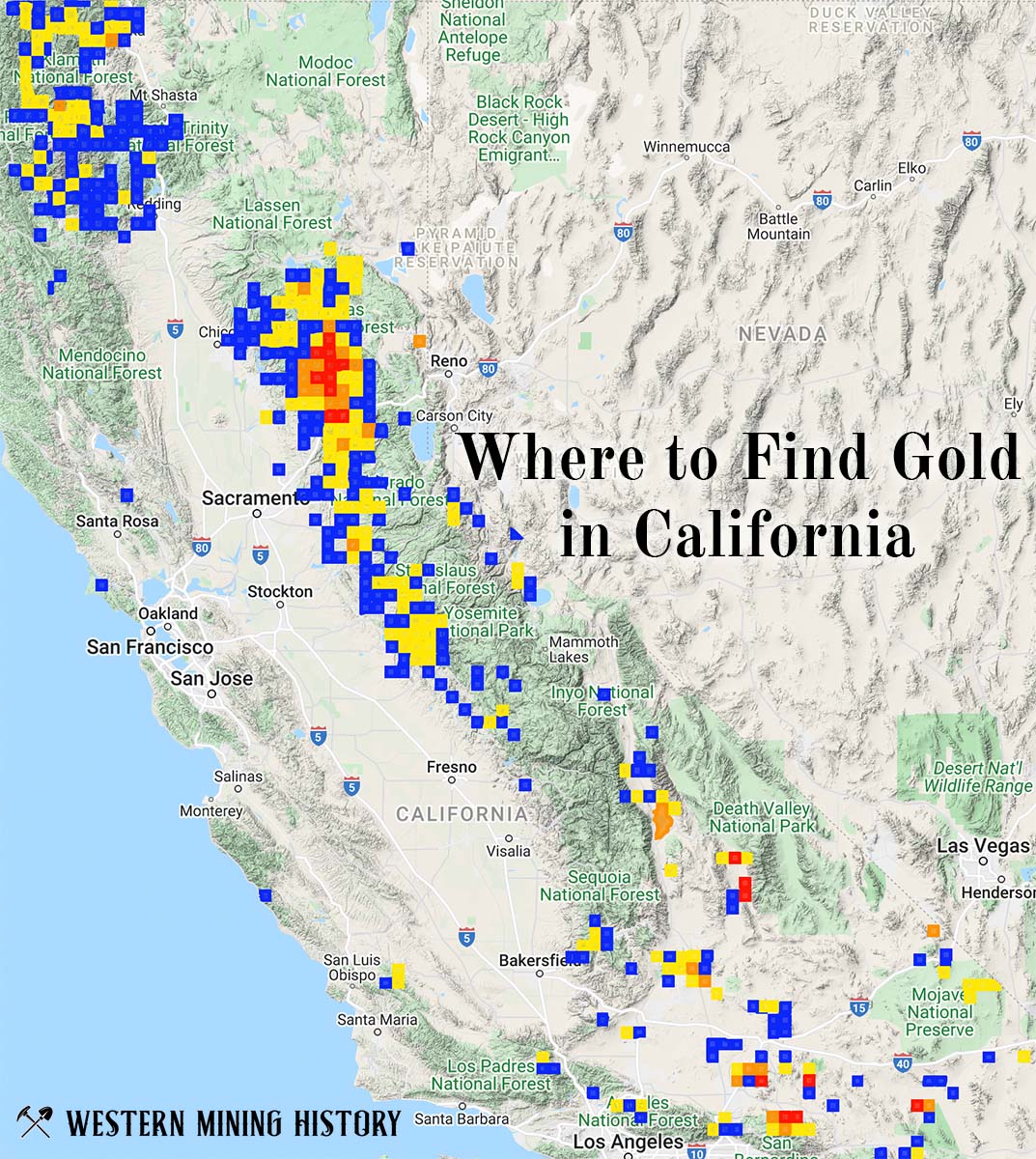The Michigan Bar District is a gold mine located in Sacramento county, California.
About the MRDS Data:
All mine locations were obtained from the USGS Mineral Resources Data System. The locations and other information in this database have not been verified for accuracy. It should be assumed that all mines are on private property.
Mine Info
Michigan Bar District MRDS details
Site Name
Primary: Michigan Bar District
Commodity
Primary: Gold
Secondary: PGE
Secondary: Silver
Location
State: California
County: Sacramento
District: Michigan Bar District
Land Status
Not available
Holdings
Not available
Workings
Not available
Ownership
Not available
Production
Not available
Deposit
Record Type: District
Operation Category: Past Producer
Deposit Type: Stream placer
Operation Type: Surface-Underground
Discovery Year: 1850
Years of Production:
Organization:
Significant: Y
Deposit Size: S
Physiography
Not available
Mineral Deposit Model
Model Name: Placer Au-PGE
Orebody
Form: Irregular
Structure
Not available
Alterations
Not available
Rocks
Name: Sand and Gravel
Role: Host
Age Type: Host Rock
Age Young: Eocene
Name: Sand and Gravel
Role: Host
Age Type: Host Rock
Age Young: Quaternary
Analytical Data
Not available
Materials
Ore: Gold
Ore: Platinum
Gangue: Quartz
Comments
Comment (Deposit): Gold was recovered from Tertiary and Quaternary alluvial gravels and flood-plain and terrace deposits in and adjacent to the Cosumnes River. The gold-bearing gravels are present mainly in the Eocene Ione Formation and in Pleistocene-Holocene deposits. Platinum and silver are also present in the alluvial deposits.
Comment (Development): Auriferous gravels of the Ione Formation in the Michigan Bar area were hydraulicked extensively in the 1860?s and 1870?s and also exploited in a small way by drift mining. The modern alluvial deposits along the Cosumnes River and some of the older bench gravels adjacent to it, including the Ione Formation, were dredged from before the 1920?s to the 1950?s.
Comment (Economic Factors): Clark (1970) estimated that total production of gold for this district was at least 1,700,000 ounces.
Comment (Identification): The Michigan Bar District is a placer-mining locality in and near the Cosumnes River. Mining activity was conducted at several sites between the former settlement of Michigan Bar on the northeast and several miles west and southwest of Bridge House to the area of Sloughhouse.
Comment (Commodity): Ore Materials: Native gold, native platinum
Comment (Commodity): Gangue Materials: Metamorphic rock, igneous rock, quartz (all as clasts)
Comment (Geology): REGIONAL GEOLOGY The Michigan Bar District is situated within the Great Valley geologic province, which is here represented by the Sacramento Valley. It is adjacent to the westernmost edge of the Sierra Nevada geologic province. The Great Valley province is characterized by Cenozoic sedimentary and volcanic rocks, while the Sierra Nevada province is characterized by complex lithologies and structures that were assembled through various plate-tectonic processes. In this region, the Sierra Nevada province is composed of belts of Paleozoic-Mesozoic metamorphic complexes that are intruded by various Mesozoic plutons. Together, they compose the basement of the province. This basement is overlain at higher elevations by erosional remnants of Cenozoic volcanic and sedimentary rocks, including gravels. Most of these various lithologies contain gold in places. Structurally, the metamorphic rocks and some of the plutonic rocks have been deformed by folding and faulting. The major fault zones typically trend northerly or northwesterly, although in places intrusion of the younger plutons has deformed some of the zones so as to assume other trends as well. In contrast, the overlying Cenozoic rocks are relatively undeformed. The rocks of the Great Valley province overlie the basement of the Sierra Nevada where it extends westward underneath the San Joaquin Valley. LOCAL GEOLOGY The Michigan Bar District is associated with Cenozoic alluvial deposits of the main drainage of the Cosumnes River where it discharges into the Sacramento Valley after passing through the Sierra Nevada basement terranes. The materials in these deposits have been derived by erosion of the various basement and Cenozoic rocks at higher elevations. In places, the basement rocks contain gold within quartz veins and altered rock, while the Cenozoic deposits contain placer gold derived by erosion of these older basement rocks. Erosion of both the gold-bearing basement rocks and the older Cenozoic rocks provided the gold that was eventually deposited in the Cenozoic placer deposits along the Cosumnes River at Michigan Bar and farther downstream toward Sloughhouse. Platinum was probably derived from erosion of ultramafic rocks and serpentinite in the Sierra Nevada basement.
Comment (Location): Location selected for latitude and longitude is the former townsite of Michigan Bar on the USGS 7.5-minute Carbondale quadrangle. Sites of mining, however, extended over various individual locations to the west and south of this location.
Comment (Workings): All of the standard placer-mining processes were used in this district including surface, hydraulic, drift, and dredging. Areas of dredge tailings are present locally throughout the district.
Comment (Commodity): Commodity Info: In 1938, a dragline operation dredged 3,411,337 cubic yards of gravel, which yielded 10,018 ounces of gold. In 1948, another operation dredged about 160,000 cubic yards of gravel, which yielded 655 ounces of gold and 66 ounces of silver.
References
Reference (Deposit): Clark, W. B., 1970, Gold districts of California: California Divisions of Mines and Geology Bulletin 193, p. 90.
Reference (Deposit): Carlson, D.W., 1955, Mines and mineral resources of Sacramento County, California: California Journal of Mines and Geology, v. 51, no. 2, p. 134-143.
Reference (Deposit): Koschmann, A.H., and Bergendahl, M.H., 1968, Principal gold-producing districts of the United States: U. S. Geological Survey Professional Paper 610, 283 p.
Reference (Deposit): Logan, C.A., 1919, Platinum and allied metals in California: California State Mining Bureau Bulletin 85, 120 p.
Reference (Deposit): Wagner, D.L. and others, 1981, Geologic map of the Sacramento Quadrangle, California: California Department of Conservation, Division of Mines and Geology Regional Geologic Map Series, Map No. 1A, scale 1:250,000.
California Gold

"Where to Find Gold in California" looks at the density of modern placer mining claims along with historical gold mining locations and mining district descriptions to determine areas of high gold discovery potential in California. Read more: Where to Find Gold in California.